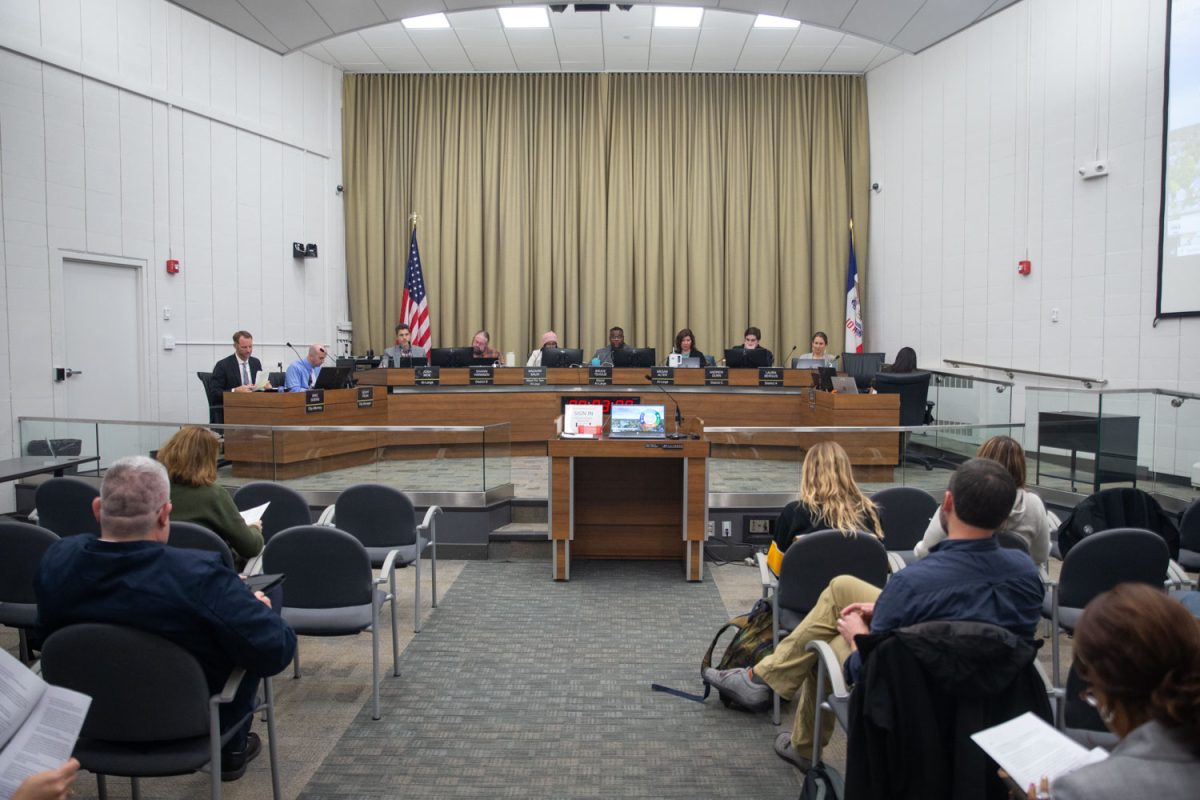Two years since its start, the county-wide Child Care Wage Enhancement Program has seen both successes and shortfalls.
Participating child care centers have reported staff retention and improved quality of care, but there is also uncertainty and fear with financing the program in the future.
The program, which began in June 2023, is a collaboration between Johnson County, the City of Iowa City, and various local organizations to provide a $2 increase for eligible child care centers. Currently, there are 10 centers enrolled in the program, Laurie Nash, the county’s youth and family services manager, said.
According to the program’s website, the goal behind the program is to help combat the low wages of child care professionals and the struggles that come with those wages without increasing the cost of child care for families.
A March 2023 presentation to the Iowa City City Council stated the average hourly wage for child care workers in the county is $11.16. The presentation also states that a family making the average median income for the county — which is just under $98,000 — spends 15 percent of their income on child care for an infant.
The program is currently funded by federal pandemic relief funds from the American Rescue Plan Act, but these funds must be spent by the end of 2026, or they will be returned to the federal government.
Right now, the program is working on sustaining the wage enhancement after these funds run dry, Nash said. One of the funding paths the program is pursuing is partnerships with the private business sector as well as its nonprofit and government partners, she said.
“It’s always been our goal to have public investment and private investment into this because it certainly benefits businesses as well,” Nash said. “Businesses are having a hard time finding staff. One of the reasons can be because staff can’t find child care, so we see this really as not a charitable giving but as an investment in the infrastructure.”
The program has also partnered with the University of Iowa to collect data on the effectiveness and impact of the wage enhancement. Megan Ronnenberg, a visiting instructor at the UI’s School of Social Work and the lead researcher for the program, said the program’s study has 215 total participants, including employees from participating and non-participating centers.
The research team is working on evaluating if the program has decreased staff turnover for involved centers compared to centers not in the program and any external factors that could impact child care centers, such as an employee’s ability to afford food and shelter, Ronnenberg said.
So far, the team has completed a survey of the study’s participants and is putting together focus groups to hone in on the issues highlighted by the survey responses, Ronnenberg said.
In terms of preliminary data, Ronnenberg said employees in the program were more likely to report being better off financially compared to a year ago than those not in the program. Specifically, 40 percent of wage enhancement program employees said they are better off compared to 20 percent of non-participating employees.
Most of the program’s child care centers have reported increased staff retention and recruitment after the $2 increase was implemented, Nash said. However, there have also been other struggles that have arisen from the program.
Allison Bettine, the executive director of the Good Shepherd Center in Iowa City, said this program has helped lower staff turnover and allowed the center to have more space for lower income families that use the state’s Child Care Assistance program.
The Child Care Assistance program helps parents and caretakers pay for child care while they work, attend school, look for work, or are unable to care for their child full-time because of medical reasons, according to the program’s website. To be eligible for the program, the family’s income can’t exceed 250 percent of the federal poverty level, the website states.
According to the U.S. Health and Human Services website, the 2024 federal poverty income guideline for a family of four in the mainland U.S. is $31,200. The federal poverty guideline is used to determine the eligibility for programs based on income levels.
RELATED: Johnson County child care wage enhancement program yields positive results
While there have been benefits to the wage enhancement, Bettine said the program’s requirement that each center have a minimum of 20 percent of Child Care Assistance clients has led to the center losing money.
Bettine said she is glad to help low-income families, but the Child Care Assistance program does not match enough of the cost the center would get from private clients who do not use this program. Additionally, the increased wages have also brought the center’s baseline expenses up, she said.
In the Good Shepherd Center’s time in the wage enhancement program, the center has lost around $74,000 in income, Bettine said. This has made Bettine concerned about the impact it will have on her center, and she has reconsidered participation in the program in the next fiscal year.
“I really want to see this program continue because I believe in it,” Bettine said. “And I’m afraid that I shouldn’t just for the health of this organization.”
Other child care centers are growing concerned about the American Rescue Plan funding deadline approaching. Kayla Kuepker, director of Loving Arms Kid Care in Iowa City, said the program has helped her attract more qualified employees and given employees a sense of purpose and respect.
However, Kuepker said she is nervous she may have to tell her employees their $2 raise will be taken away if the program does not find an alternative funding source.
“Unfortunately, right now I have to tell employees we are not sure how long this funding will last for, and that does make me nervous about when or if it does go away,” Kuepker said. “I just really hope that our employees don’t leave because of that.”



